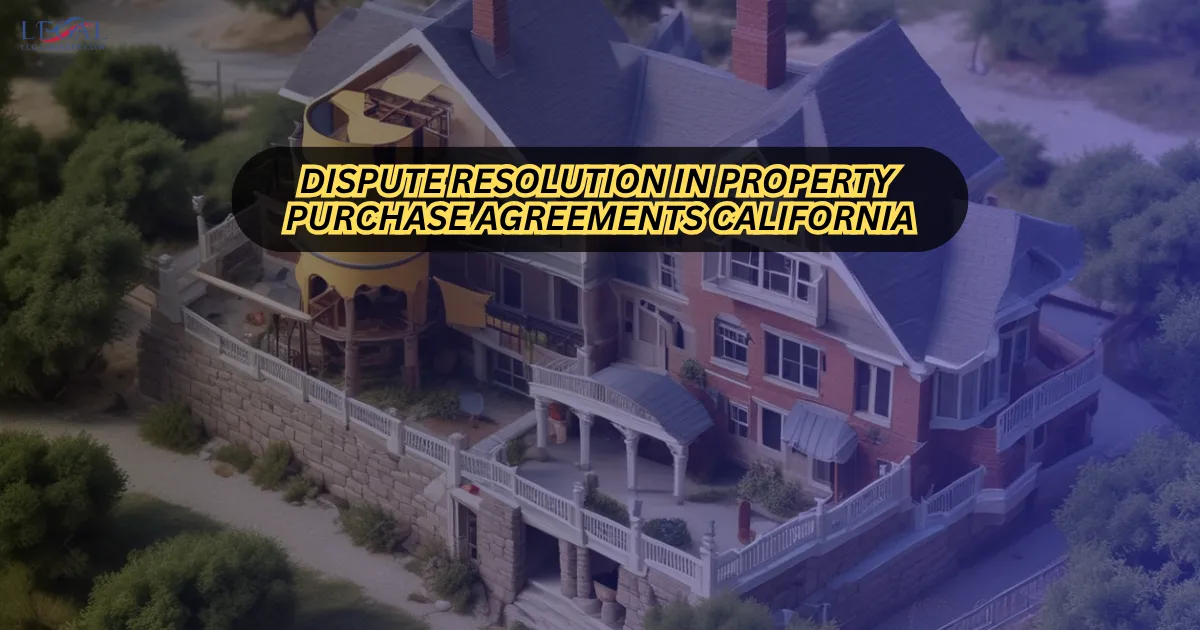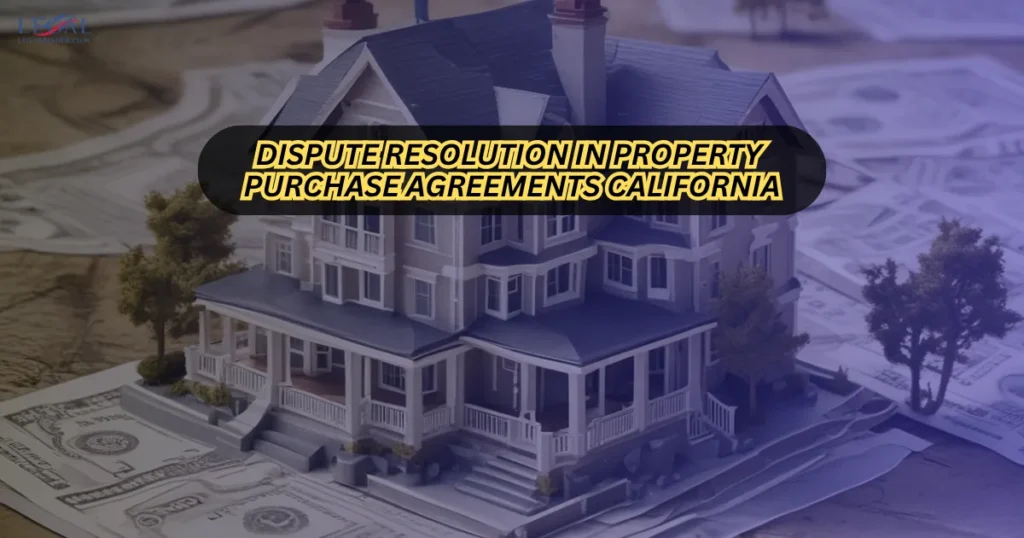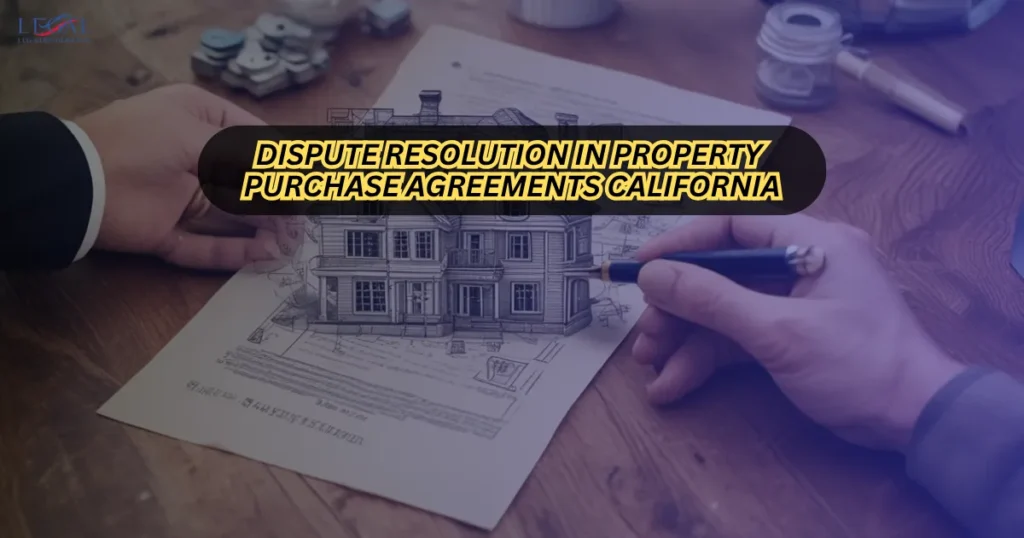Physical Address
304 North Cardinal St.
Dorchester Center, MA 02124
Physical Address
304 North Cardinal St.
Dorchester Center, MA 02124

Dispute resolution in property purchase agreements California is the critical safety net that protects both buyers and sellers when a real estate transaction hits a roadblock. Whether you are investing in your first home, selling a cherished property, or negotiating a complex commercial deal, the dispute resolution clauses in your agreement determine how conflicts will be handled—calmly and fairly, or painfully and expensively.

Picture this: You’ve negotiated a great deal, signed the purchase agreement, and are counting down the days to closing. Then, an inspection reveals hidden damage. Negotiations stall. Tensions rise. Without a clear dispute resolution process, you could be headed for months of frustration, legal battles, and financial loss. In California, where real estate transactions are guided by precise laws and contractual standards, understanding and using dispute resolution strategies can save you time, money, and relationships.
This comprehensive guide will walk you step-by-step through what dispute resolution means in California purchase agreements, why it matters, and how to leverage negotiation, mediation, arbitration, and litigation options to protect your investment and achieve positive outcomes.
For more real estate law insights and contract guidance, visit our homepage or head to our California Contracts Resource Center.
Dispute resolution refers to the methods outlined in the purchase agreement for resolving disagreements between the buyer and seller. In California, standard real estate contracts—like those from the California Association of Realtors (CAR)—include sections detailing the resolution process.
Start by reading your purchase agreement carefully to understand which resolution methods are mandated. Many California contracts require mediation before litigation.
Direct communication between buyer and seller (or through agents) can often resolve minor disputes quickly.
Mediation involves a neutral third party helping both sides reach a voluntary agreement. It’s confidential and less expensive than litigation.
Arbitration is a more formal process where a neutral arbitrator issues a binding decision. Many California contracts include an arbitration option.

| Factor | Mediation | Litigation |
|---|---|---|
| Cost | Lower, shared by parties | High legal fees, court costs |
| Time | Days to weeks | Months to years |
| Privacy | Confidential | Public record |
| Control | Parties control outcome | Judge decides outcome |
Is mediation mandatory in California purchase agreements?Many agreements require mediation before either party can sue—review your contract terms.What happens if one party refuses mediation?This may impact their ability to recover attorney fees in litigation.Can I choose arbitration instead of court?Yes, if both parties have agreed to arbitrate in the purchase agreement.Are dispute resolution proceedings public?Mediation is private; arbitration and litigation are typically public unless sealed by the court.

Approaching dispute resolution in property purchase agreements California with knowledge and a strategic mindset gives you the best chance at achieving a fair and positive outcome. By understanding contractual clauses, acting promptly, and choosing collaborative resolution methods like mediation, you can protect your investment, relationships, and peace of mind.
Whether you are a buyer or seller, keep communication open, document every step, and don’t hesitate to involve professional help when needed. A well-managed dispute is often the mark of a strong, resilient transaction.
For more contract guidance and California-specific legal resources, visit our home page.